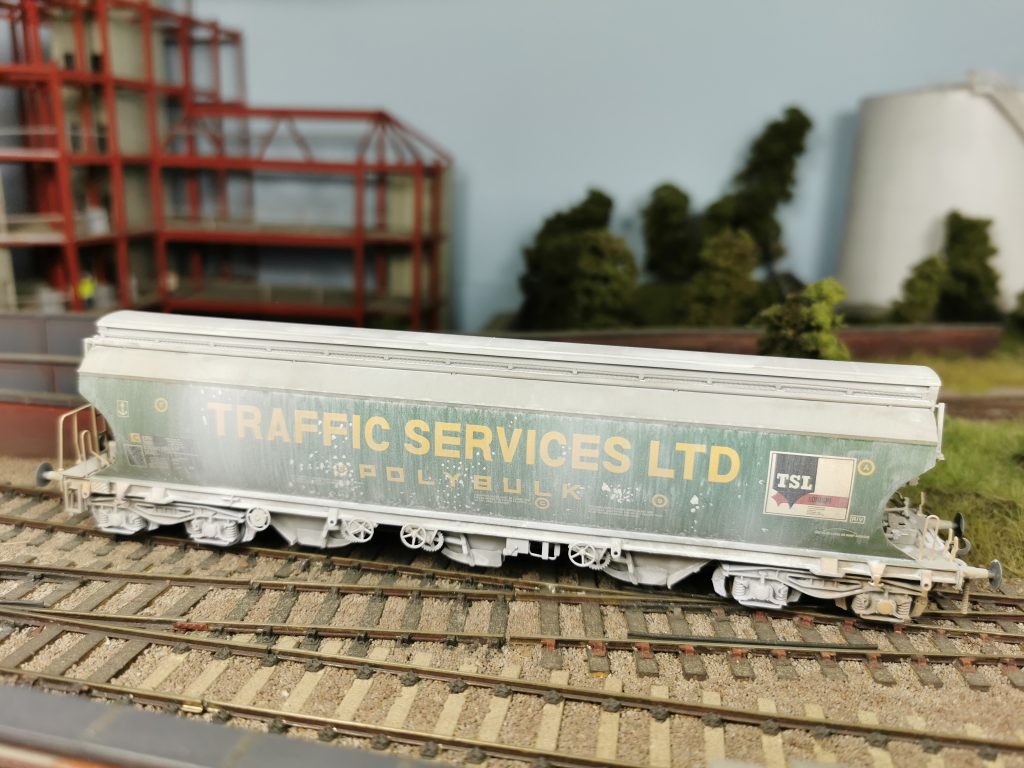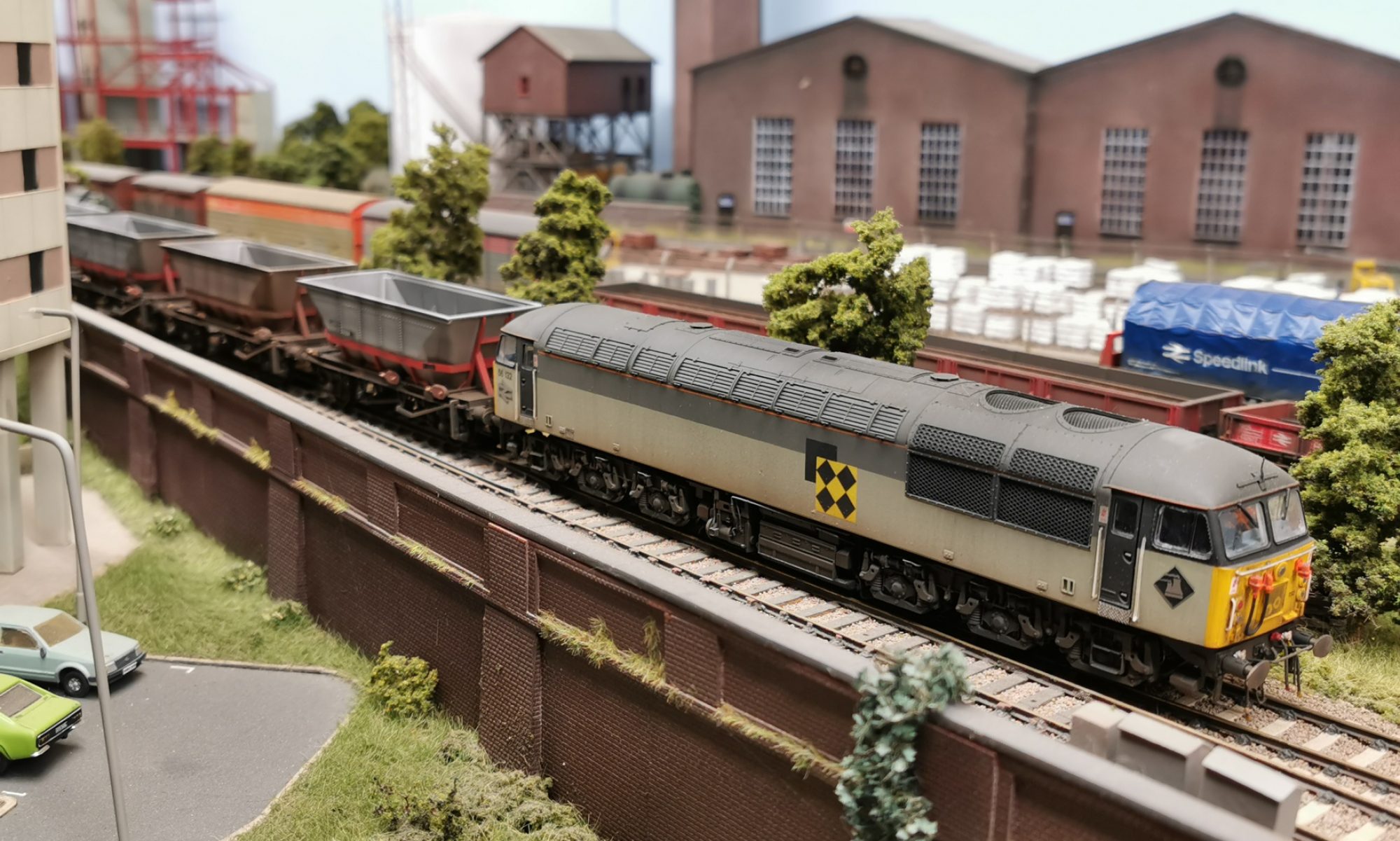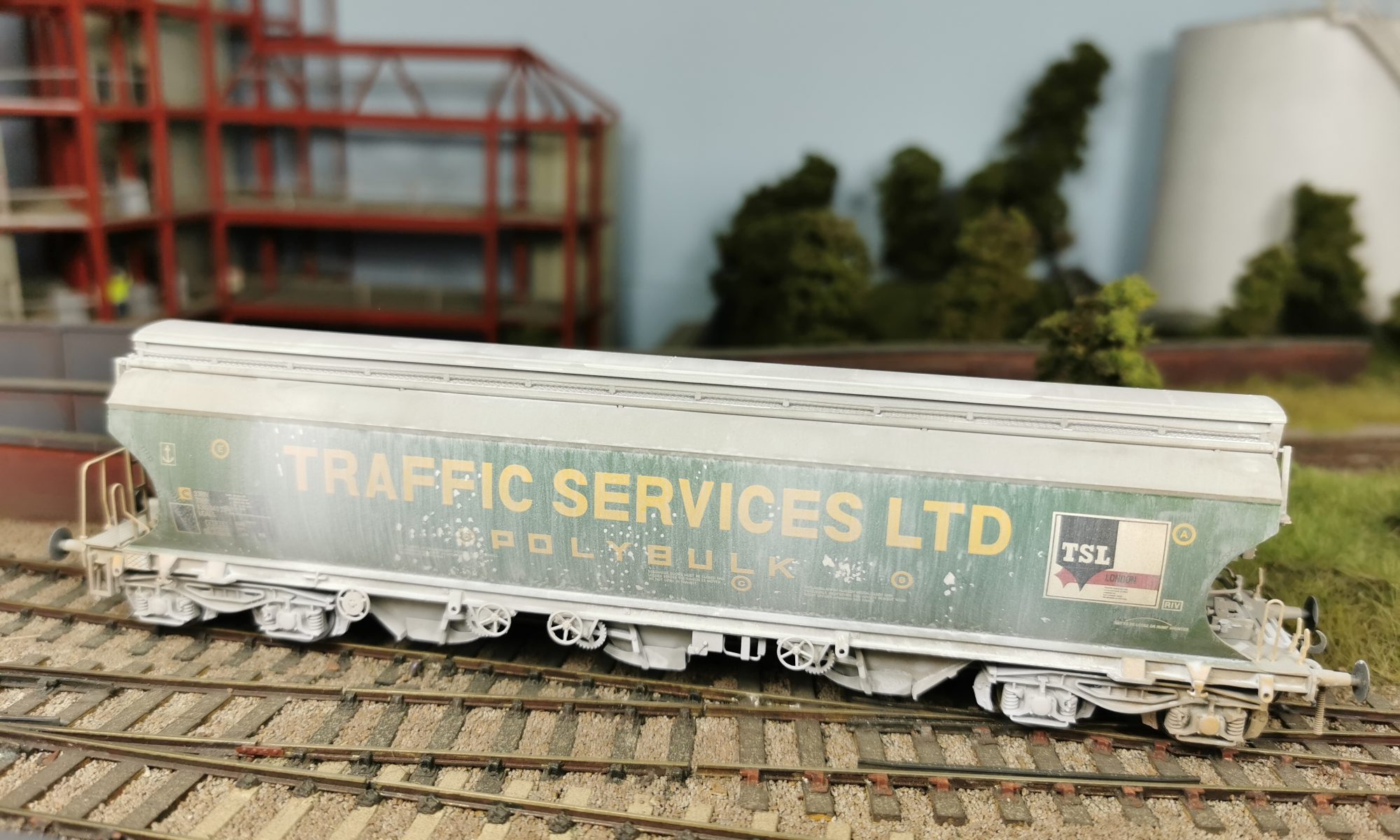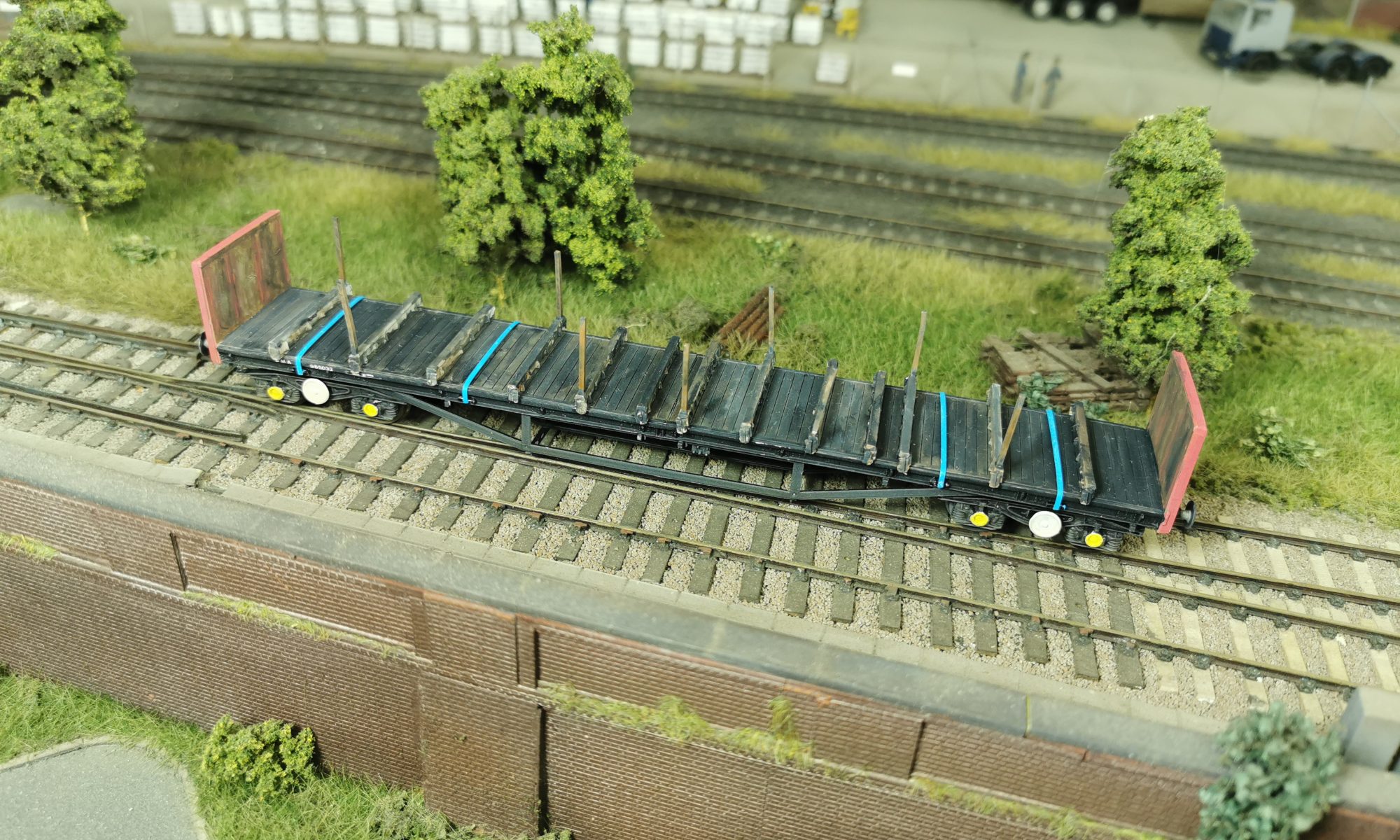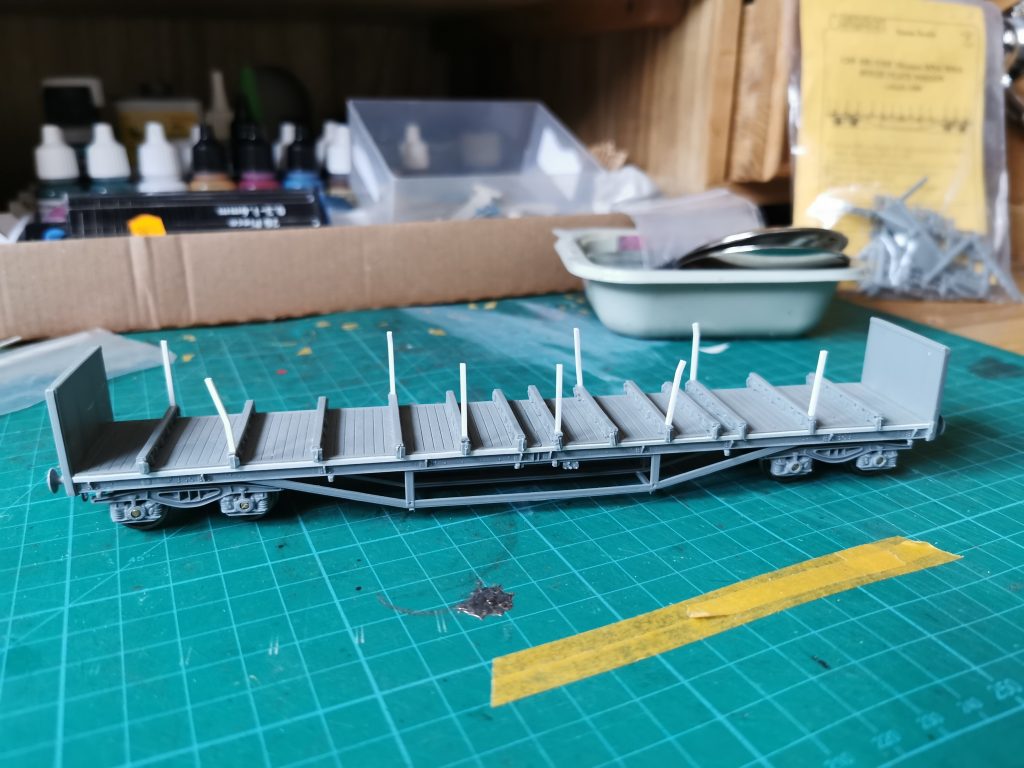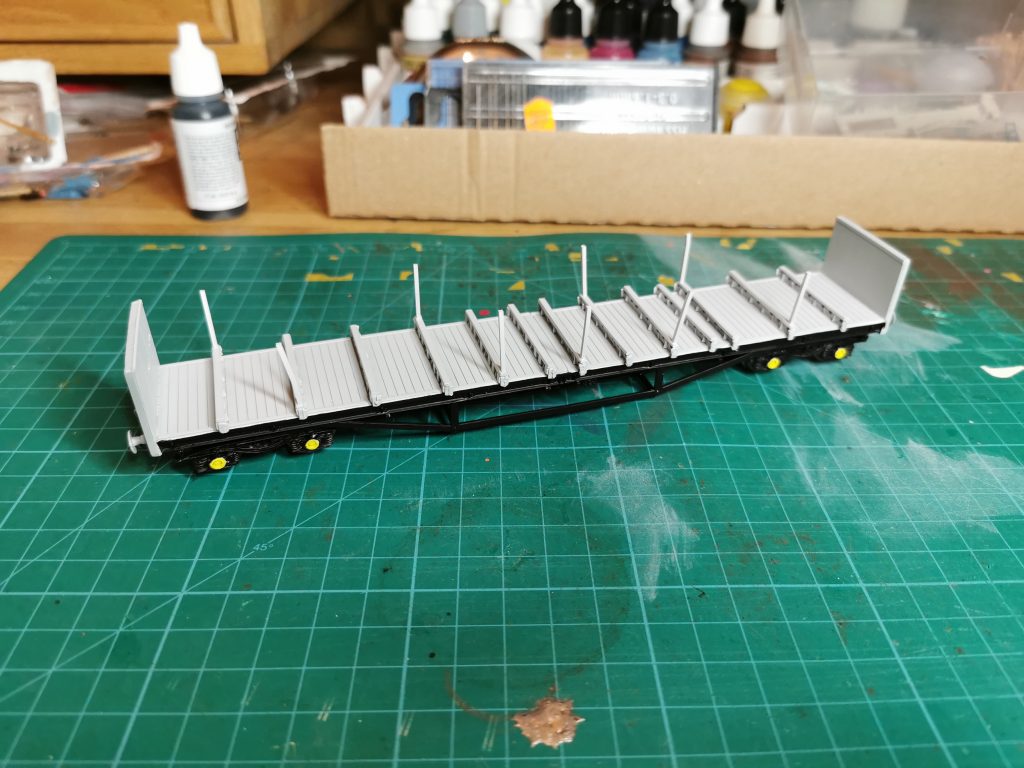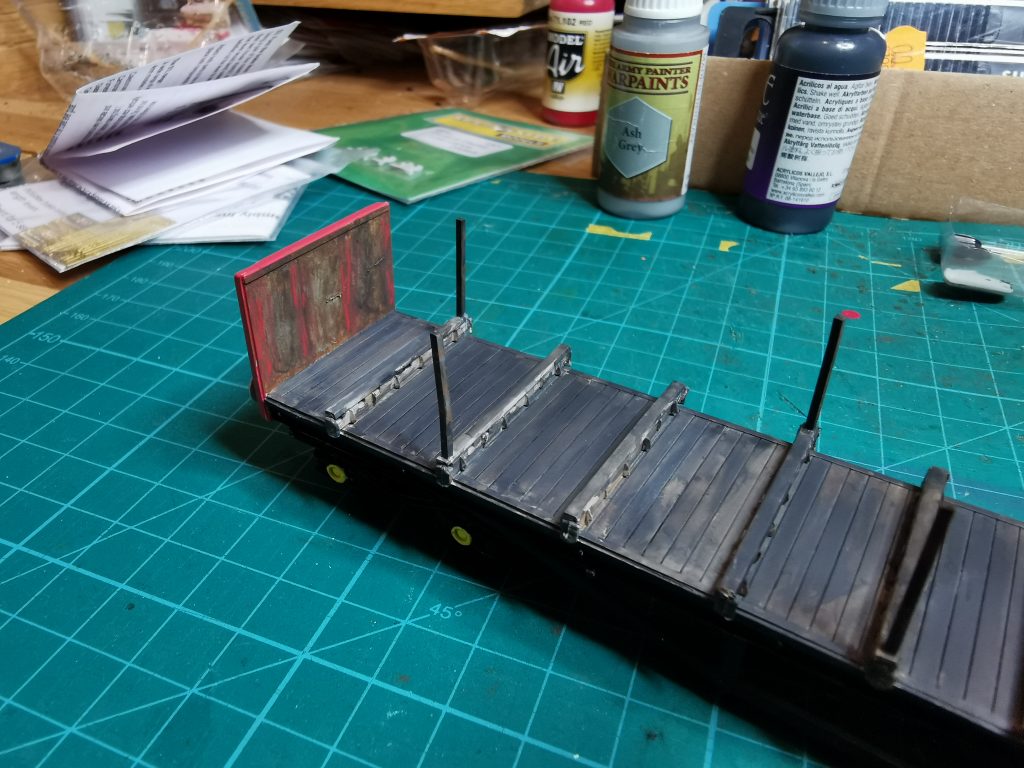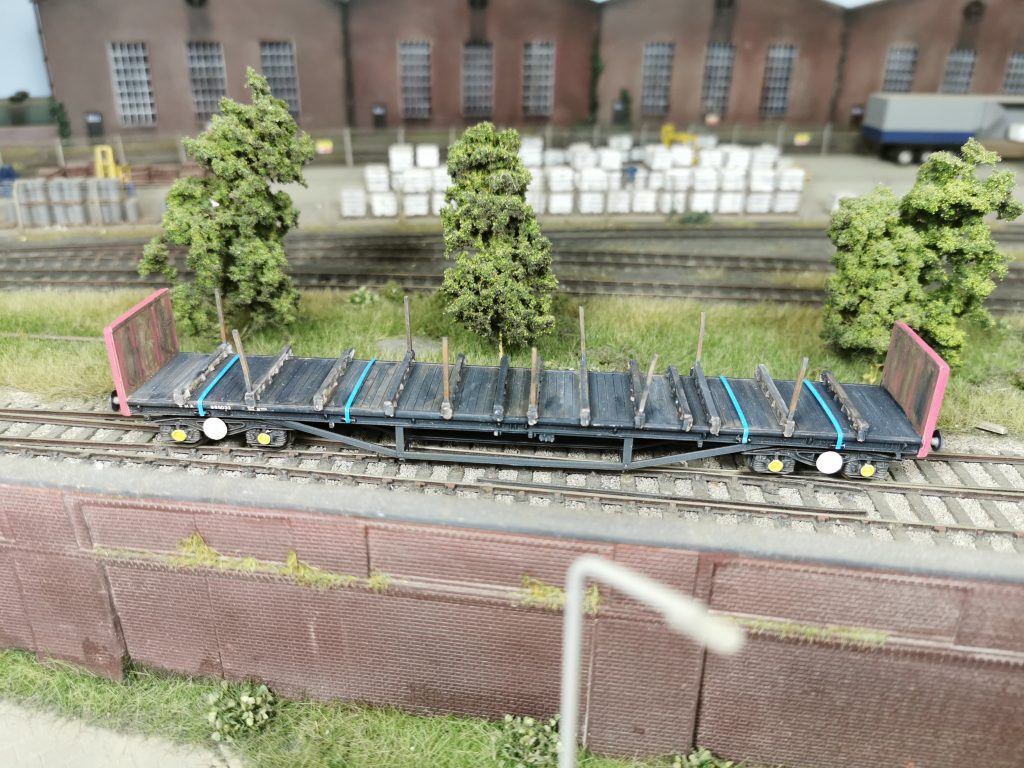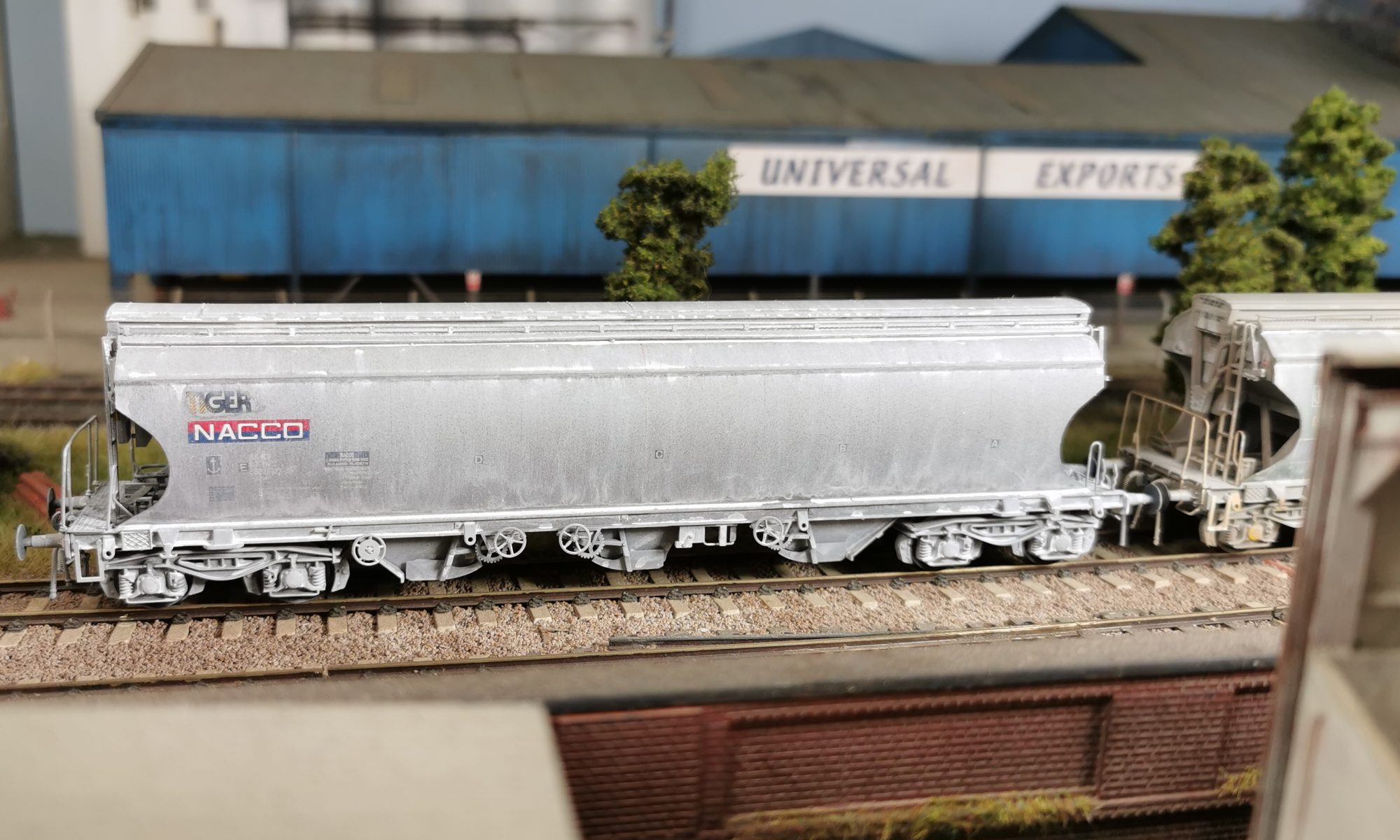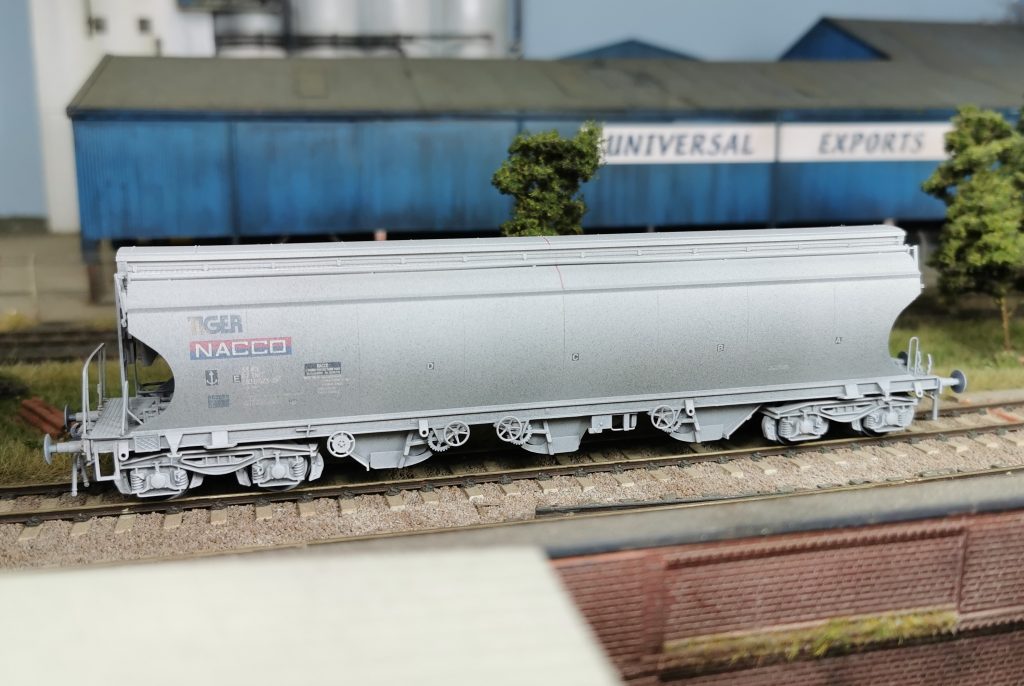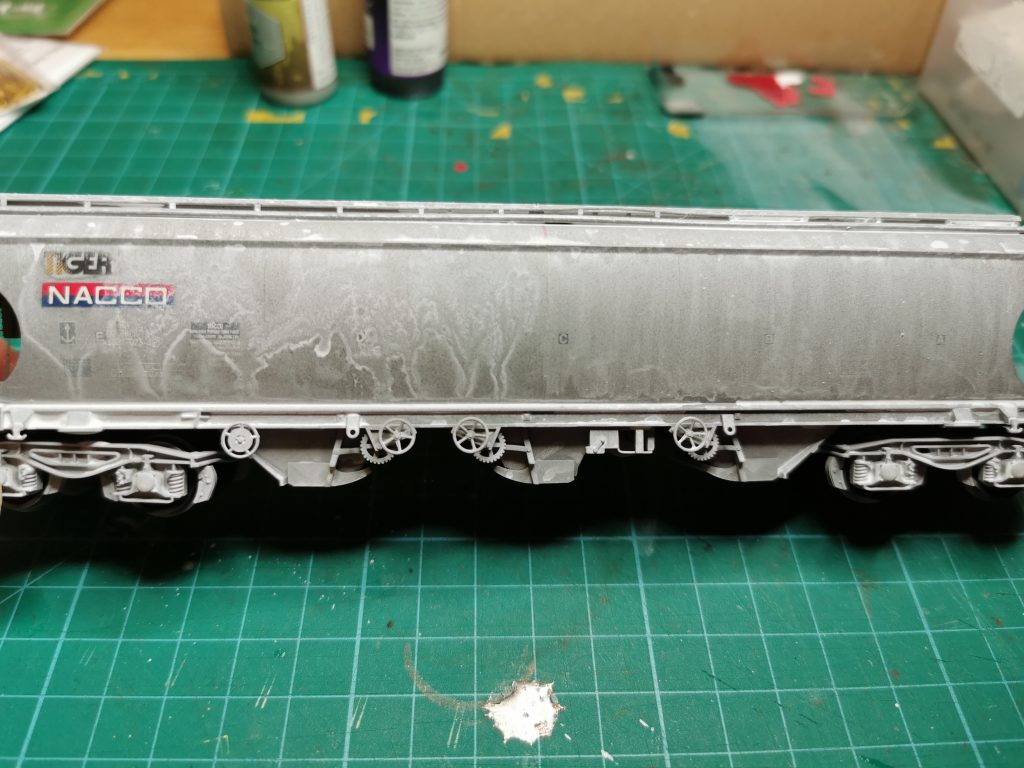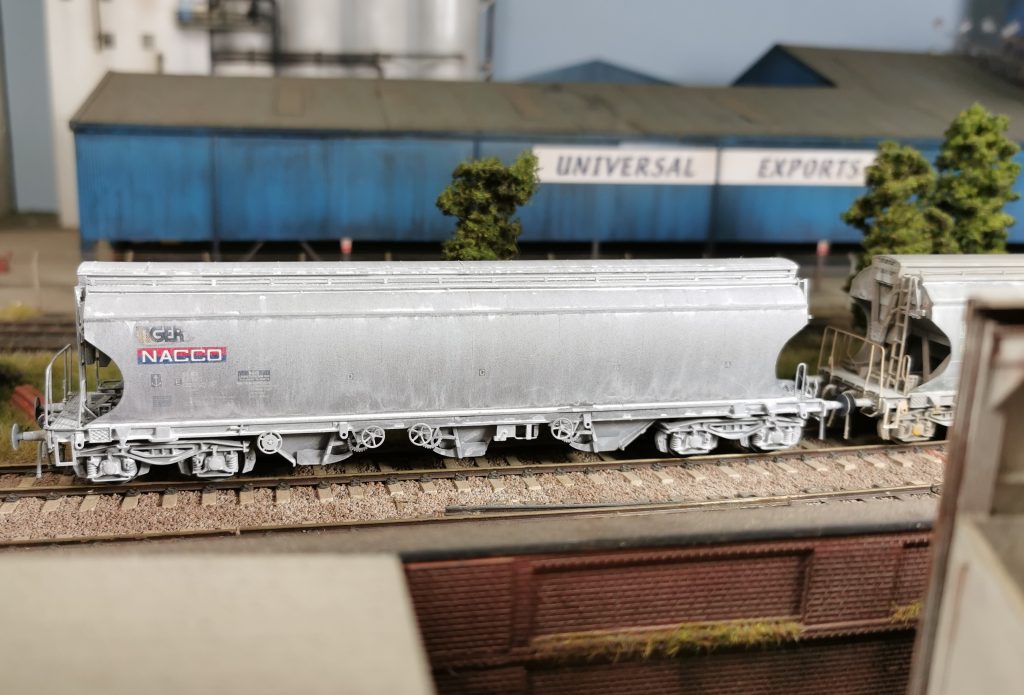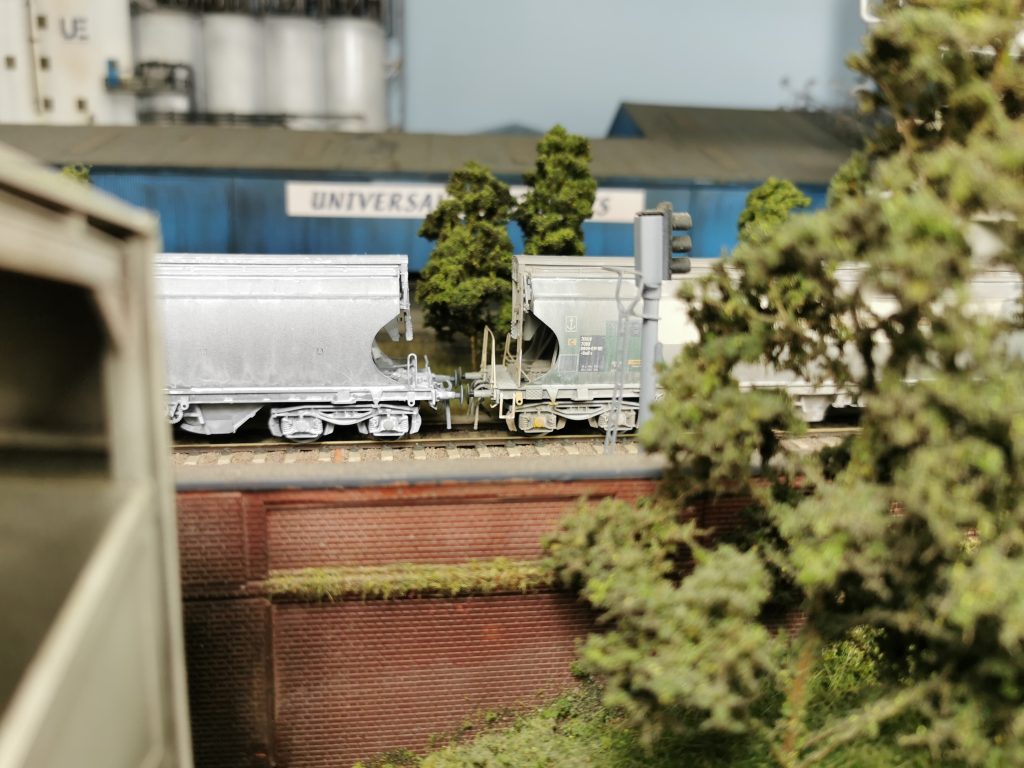Recently, I’ve enjoyed doing the two Rails of Sheffield exclusive Polybulk wagons, so I decided to pull out the four original Bachmann released wagons I’ve had in storage since they first became available.
A little research on Paul Bartlett’s website soon helped me decide on the prototypes:
33 70 938 2014-6 This one is fairly dirty with more brown at the outer ends.
33 70 938 2017-9 This photo was taken in 1987, so some imagination was required to add 3 years worth of weathering.
33 70 938 2041-9 This wagon was repainted in 1989 so will remain fairly clean. This wagon wasn’t renumbered and is the standard Bachmann release.
33 70 938 2052-6 This photo is later (1993) and has CAIB branding so this was ignored.
To give four different running numbers, three were chosen to have parts of their numbers removed. This was done by simply brush painting over the tiny numbers with matt black. Once dry, gloss varnish was then applied as a base for the transfers.
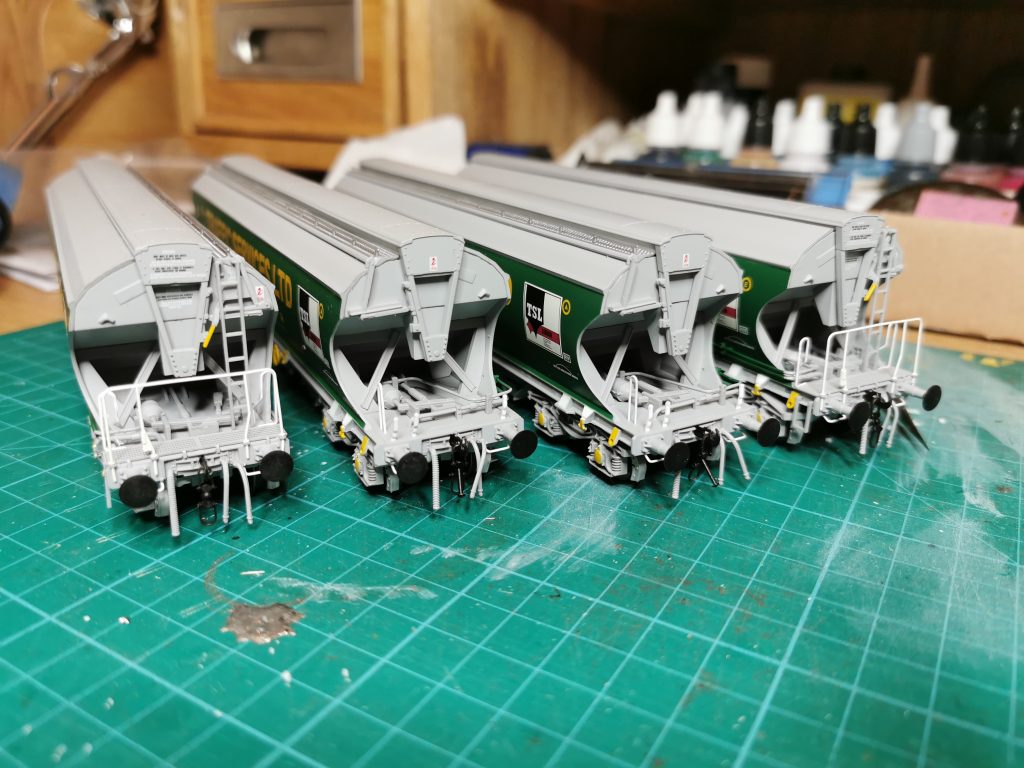
I ordered the Grainflow sheet from Railtec Transfers, and cut out individual numbers from the sheet. The numbers were then applied and sealed the following day with gloss varnish, and once that had dried the whole wagon was given a coat of matt varnish.
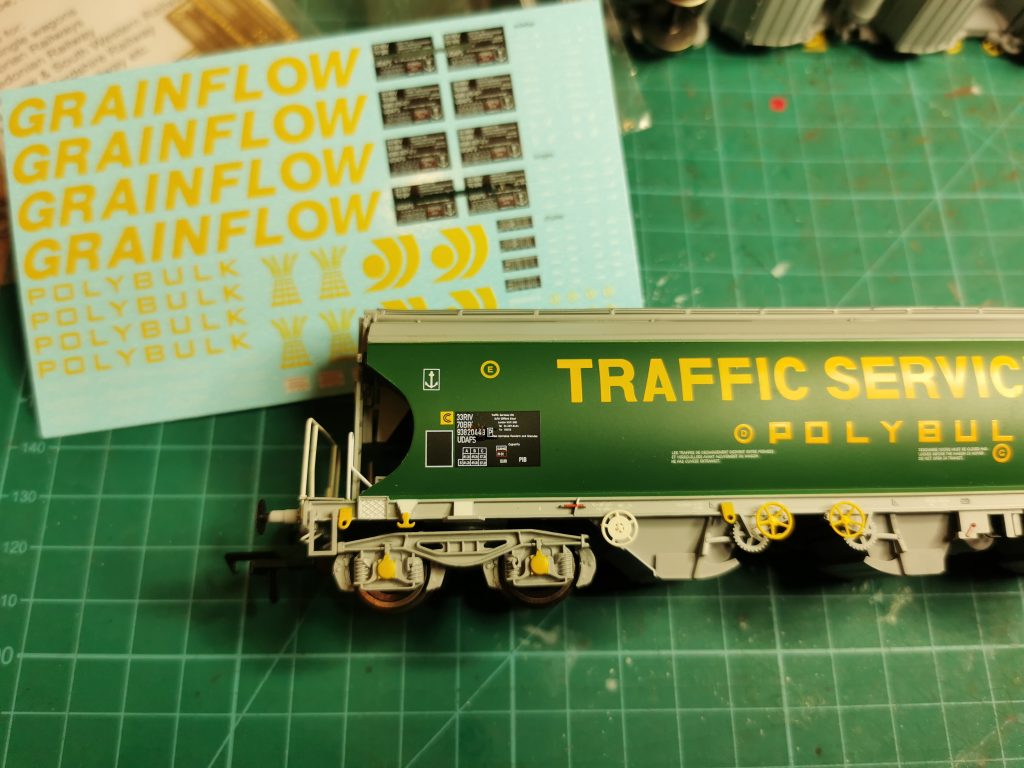
All four wagons were then weathered with the airbrush, paying attention to the prototype photos for each wagon. One wagon had some ‘white spotting’ to the body sides, so this was added with a small brush and a mix of an off-white colour. Finally, a Flory Models wash was applied, left to dry, and then wiped in a downward motion with a sponge.

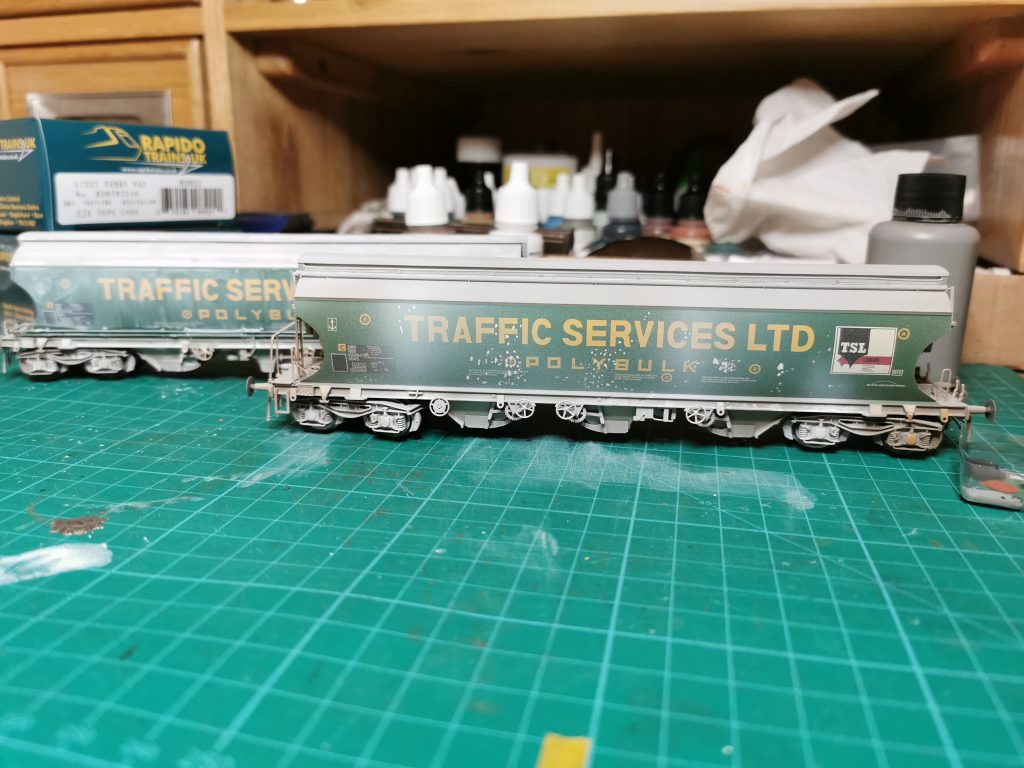
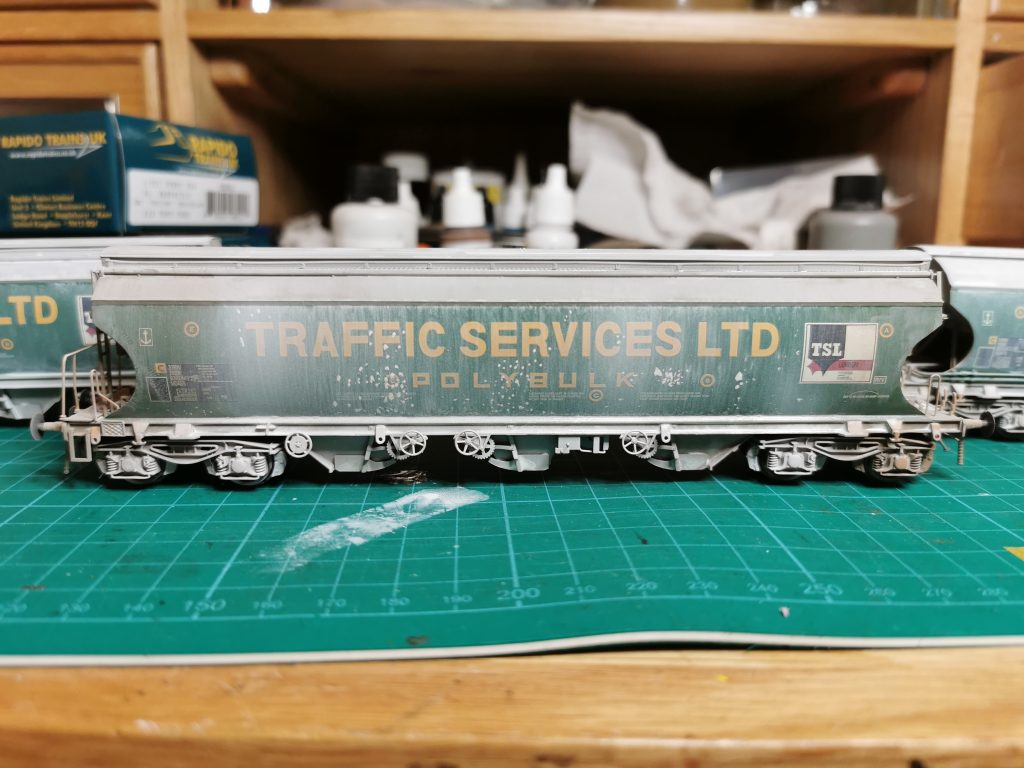
I’m really pleased with how these have turned out, they’ll look perfect once I’ve done the Clay Tigers to go with them. Now, onto the next project!
